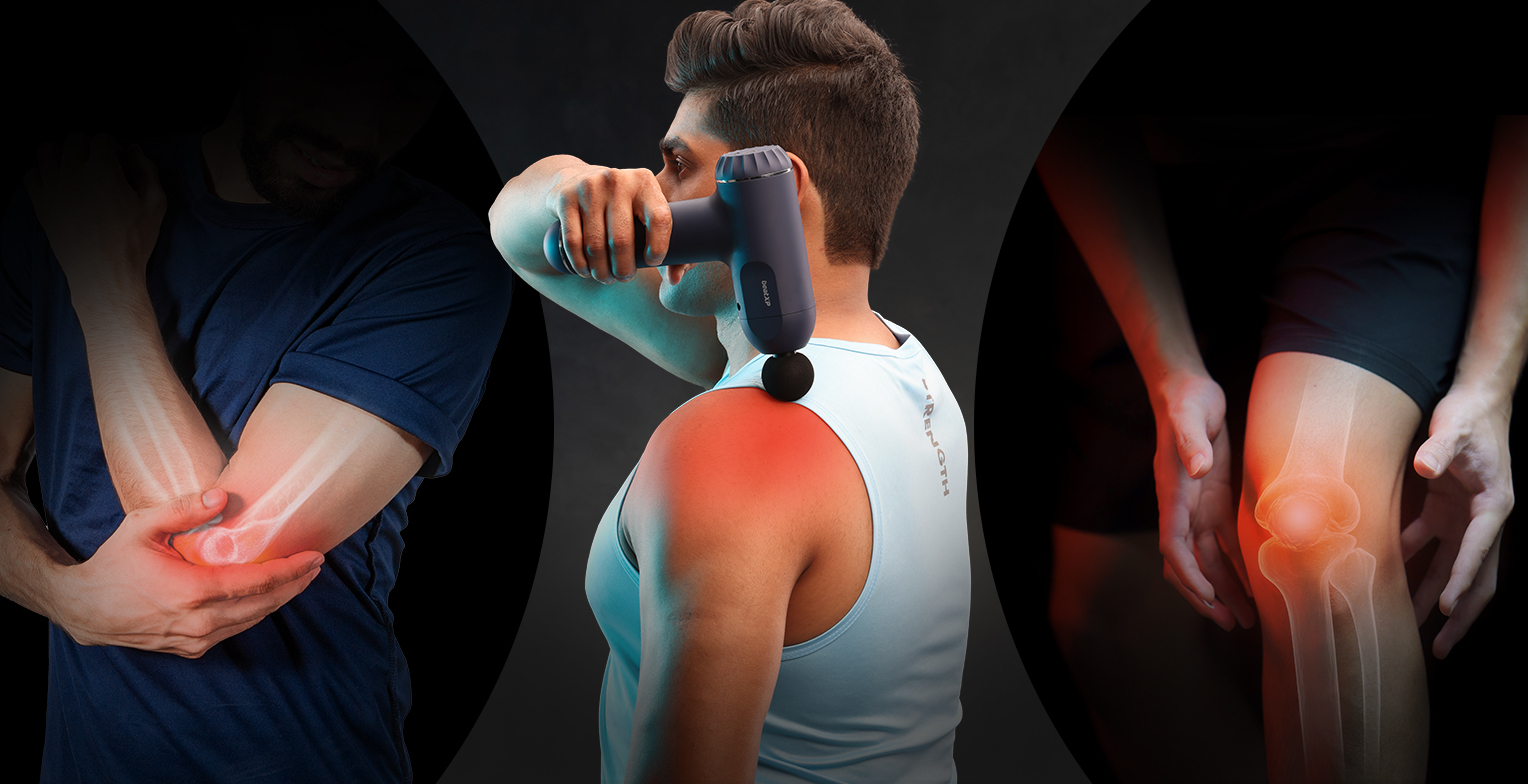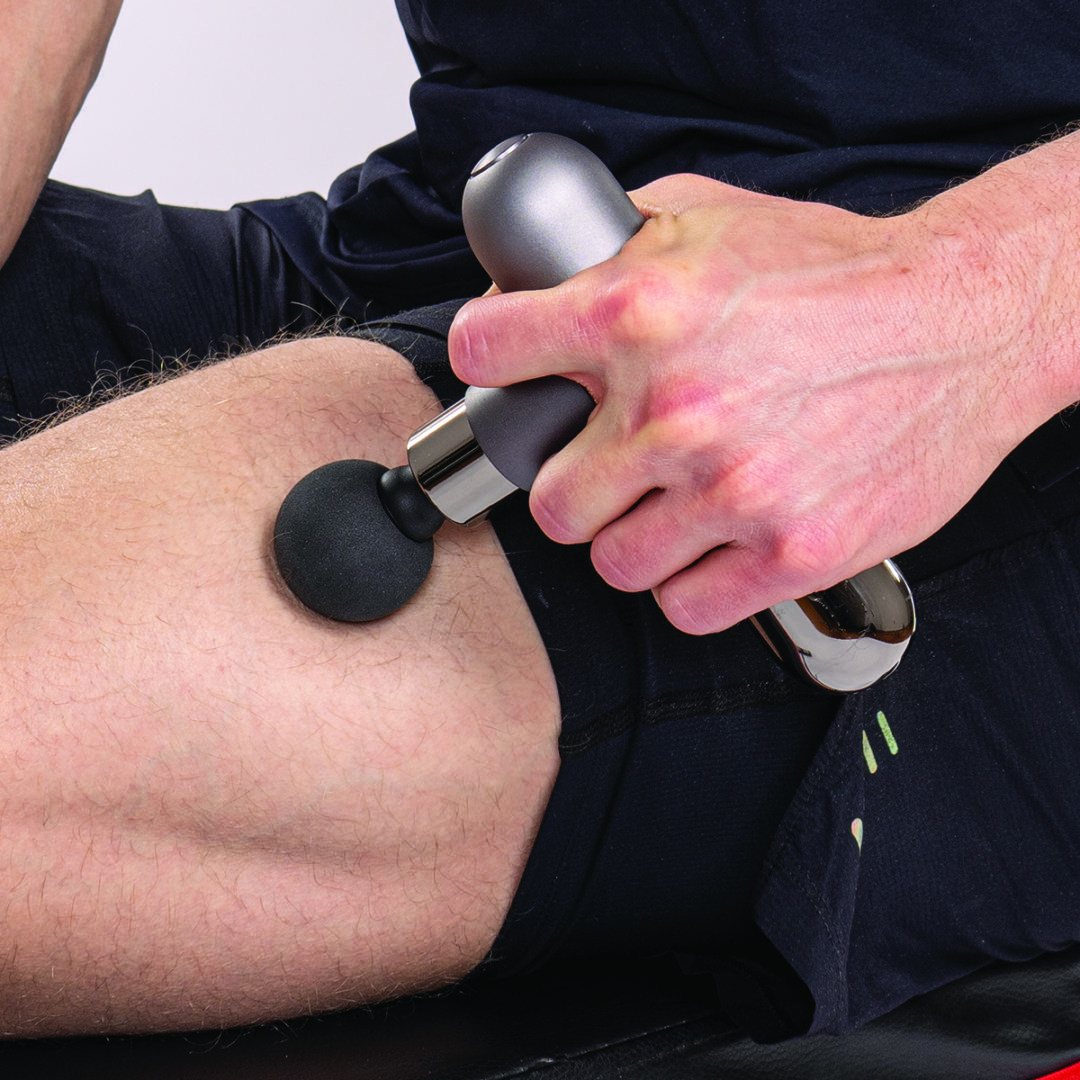Can Massage Guns Help with Arthritis Pain?
Arthritis is a common condition that causes inflammation and pain in the joints. There are various types of arthritis, each with its own set of symptoms. While there’s no cure for arthritis, many treatments can help manage pain and improve mobility.
Recently, massage guns have gained popularity as a potential tool for managing arthritis pain. But how effective are they? This article explores the potential benefits of massage guns for arthritis, along with safety considerations and alternative pain management options.
Understanding Arthritis and Pain
Arthritis affects millions of people worldwide. It can cause a variety of symptoms, including:
- Joint pain and stiffness
- Swelling and redness around the joints
- Reduced range of motion
- Difficulty performing daily tasks
The two most common types of arthritis are osteoarthritis and rheumatoid arthritis.
1. Osteoarthritis (OA):
- Pain characteristics: OA pain often presents as a dull ache or stiffness, typically worse after activity and improving with rest. It can also manifest as a grinding or clicking sensation in the joints.
- Commonly affected areas: OA commonly affects weight-bearing joints like knees, hips, lower back, and feet. However, it can also affect hands and other joints.
2. Rheumatoid Arthritis (RA):
- Pain characteristics: RA pain is typically described as a sharp, burning, or throbbing sensation. It’s often symmetrical, meaning it affects both sides of the body in the same joints. Morning stiffness, lasting for more than 30 minutes, is a hallmark symptom of RA.
- Commonly affected areas: RA primarily affects the smaller joints of the hands, wrists, feet, and ankles. However, it can also involve larger joints like knees, hips, and shoulders.
3. Other Types of Arthritis:
- Psoriatic Arthritis: This type of arthritis is associated with the skin condition psoriasis and can cause pain, swelling, and stiffness in joints, along with characteristic skin lesions.
- Gout: This form of arthritis causes sudden and severe attacks of pain, often affecting the big toe but potentially involving other joints. The pain is often described as excruciating and throbbing.
It’s important to consult a doctor for proper diagnosis and treatment of arthritis. They can recommend a personalized plan that may include medication, physical therapy, and lifestyle changes.
How Massage Guns Work for Pain Relief
Massage guns are handheld percussion devices that deliver rapid bursts of pressure to targeted muscle tissue. This percussive therapy may provide several benefits for people with arthritis:
- Improved Blood Flow: The percussive action can increase blood flow to the targeted area. This delivers oxygen and nutrients to the joints, promoting healing and reducing inflammation.
- Reduced Pain Perception: The stimulation of mechanoreceptors in the muscles may send signals to the brain that can help reduce pain perception.
- Breakup of Muscle Tension: Massage guns may help break down muscle tension and adhesions that can contribute to joint pain and stiffness.
- Improved Range of Motion: By reducing muscle tension and stiffness, massage guns may help improve flexibility and range of motion in the joints.
While these mechanisms suggest potential benefits, more research is needed to definitively confirm the long-term effectiveness of massage guns for arthritis pain relief.
Can Everyone with Arthritis Use a Massage Gun?
While massage guns may offer potential benefits for some people with arthritis, it’s crucial to approach their use with caution and consider several factors to ensure safety and effectiveness:
1. Consulting a Doctor:
Before using a massage gun, especially if you have any type of arthritis, consulting a doctor is essential. They can assess your specific condition, severity, and any potential risks associated with massage gun use.
2. Tailoring Use to Arthritis Type:
- Osteoarthritis: For individuals with OA, focusing on the muscles surrounding the affected joints, rather than directly on the joint itself, might be more beneficial.
- Rheumatoid Arthritis: Due to the inflammatory nature of RA, massage guns might not be suitable in all cases. Consulting a doctor and starting with minimal settings is crucial.
3. Considering Pain Level and Inflammation:
- Severe Pain or Inflammation: If you experience significant pain or inflammation in your joints, using a massage gun might worsen the discomfort. It’s advisable to wait for the inflammation to subside before considering massage gun therapy.
- Start Low and Slow: Always begin with the lowest pressure setting and short application times (around 30 seconds per area). Gradually increase pressure and duration only if comfortable and tolerated.
4. Avoiding Sensitive Areas:
- Joints: Never use a massage gun directly on the joints themselves. Focus on the surrounding muscle groups.
- Bones and Nerves: Avoid using the massage gun on bony prominences or areas near major nerves.
- Thin Skin: Be cautious when using a massage gun on areas with thin or fragile skin, such as the face or inner arms.
5. Monitoring for Discomfort:
- Stop Immediately: If you experience any pain, discomfort, or worsening of symptoms, stop using the massage gun immediately and consult your doctor.
- Listen to Your Body: Pay close attention to how your body reacts during and after using the massage gun. If you experience any negative effects, discontinue use and consult a healthcare professional.
6. Potential Risks and Complications:
- Increased Inflammation: In some cases, massage gun use might inadvertently increase inflammation in the joints, especially in individuals with active RA.
- Skin Bruising: Using a massage gun with too much pressure or for too long can cause skin bruising, especially in areas with thinner skin.
- Muscle Soreness: Similar to any physical therapy modality, initial use of a massage gun might cause temporary muscle soreness. However, this should subside within a few days.
Alternative Pain Management Options for Arthritis
Massage guns are just one tool in the pain management toolbox for arthritis. Here are some other options to consider:
- Medication: Over-the-counter pain relievers and prescription medications can help manage pain and inflammation.
- Physical Therapy: A physical therapist can design a personalized exercise program to improve strength, flexibility, and range of motion in the joints.
- Heat and Cold Therapy: Applying heat or cold packs to sore joints can help reduce pain and inflammation.
- Weight Management: Maintaining a healthy weight can reduce stress on the joints.
- Assistive Devices: Using canes, braces, or other assistive devices can help improve mobility and reduce pain.
Remember, the best approach to managing arthritis pain often involves a combination of these strategies. Discuss your options with your doctor to create a personalized treatment plan that works best for you.
Conclusion: Finding Relief for Arthritis Pain
Arthritis pain can significantly impact quality of life. While massage guns offer a potential tool for pain management, they are not a one-size-fits-all solution.
Consult your doctor to determine if a massage gun is suitable for your specific needs. They can also help you develop a comprehensive treatment plan that incorporates other pain management strategies like medication, physical therapy, and lifestyle changes.
By exploring various options and working with your doctor, you can find effective ways to manage your arthritis pain and improve your overall well-being.

Leave a Reply